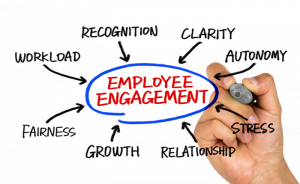It’s a very tough market in electrical and computer engineers for companies that provide security applications, Ai, IoT, and aerospace products. Under rules from FAA and ITAR to FCC to ITAR to DoD, the education bubble shortage of US born engineers is evident. Requiring US citizenship or green card (permanent residence status), real unemployment nationwide across all industries is still high.
First we need to understand the reality of the education bubble. In the USA, the primary reason we have a decline in economic power is that since the 80s we have moved from real education in science, history, english, writing, and mathematics to “social awareness” and social justice teaching.
As such, we produce a declining number of electrical and computer engineers for four decades – especially USA natives. Want proof the education bubble is worsening? Graduates numbered 14,584 in 2004-05, but declined to 14,209 in 2005-06 and 13,783 in 2006-07. Master’s degrees also dropped in the same time period, recording a significant decrease from 41,087 in 2004-05 to 38,451 in 2005-06, followed by a smaller decrease to 37,320 in 2006-07.
Education Bubble Creates Shortage of US born Engineers
Enrollment of U.S. citizens in graduate science and engineering programs has not kept pace with that of foreign students in those programs as new foreign student enrollment for 2008-2009 increased by approximately 16.0% from the previous academic year. Since the federal government took over education with the Department of Education in 1979, our elementary schools and high schools have declined and at the university level the education bubble is worse.
The Education Bubble shortage of US born engineers exists due to this social engineering. The education bubble has come about doe to the federal government’s free-spending ways. We re broke as a nation and cannot continue to give student loans to those whose GPA is not deserving. And like my family did for me and my siblings, it is a parent’s sacrifice and savings to put a kid through college. Or going to school at night while working full time like my father did.
Or going via the GI Bill by serving in the military. Or busting your butt in 2 years of community college like my own son did (who then received full scholarships for bachelor and master based upon his grades) who then achieved a PhD in Space Physics. He soundly defeats the issues in the education bubble.
Reasons for the Education Bubble Shortage of US born Engineers
Education should be about Learning and Competition
The education bubble shortage of US born engineers exist due to a failure to deal with real life in educating our children. Just as in life there are winners and losers – and no one should receive a trophy just because they tried. And if you did not win, so what? I was taught to keep trying. And I spent 2-3 hours a day in homework from elementary all the way through high school. In elementary and high school we were encouraged to join clubs and be involved. Me – I chose football and Key Club.
Those two things taught me competition, being a team player, and giving of my time to my community. With fierce competition and high education standards, we had no education bubble. And the focus on high academic standards prepared me for college. Today our schools focus on “feel-good” social engineering and teaching children political and social correctness rather than the 3 Rs and molding children for a bright future. We need to address the fundamentals about the education bubble.
We as citizens and responsible voters can CHANGE the education bubble. Scientists and engineers today make up only 4% of US employment; even doubling their number would in itself have a modest overall impact on the economy. It seems odd to me that for the sake of so-called global diversity, we fail to provide encouragement and programs to elevate our own minority citizens and break the bonds of failing inner-city schools to allow these kids to learn STEM. I think you’d be surprised how well inner city children in Chicago can become engineers and scientists if only provided the will and means by our academic elitists.
Rather, the point is that scientists and engineers contribute disproportionately to the creation of jobs for the other 96% of the nation’s workforce by generating knowledge, by innovating, and by establishing new companies based on that knowledge and innovation. We can overcome the education bubble shortage of US born engineers.
First, the outlook for 2018 and beyond is worse unless we dramatically increase H1B visas. It amazes me how often I hear “we can recruit on our own as so many people looking for work” and Hiring Managers who tell me “HR sends them garbage resumes, but the corporate decision makers have their hands tied.”
If you are in artificial intelligence, aerospace or defense systems, cyber security, industrial manufacturing or robotics, mobile digital media, broadband or mobile network operations, wireless infrastructure or IoT data / devices / networks, you often are required by federal regulations and laws to hire US citizens or green cards due to the security clearance needed.
More so, when you need vendor-facing, or customer-facing engineers where the candidates in USA must be able to speak plain understandable English, the education bubble shortage of US born engineers is even greater. Oddly we lead in philosophy, history, sports nutrition, social services, marketing, and law degrees. Some of those are needed but we are woefully declining in science and mathematics (ranked 27 in the world and dropping) as the education bubble shortage of US born engineers increases.




 One of the gurus I learned from to define performance objectives focused recruiting is Lou Adler. Here is a
One of the gurus I learned from to define performance objectives focused recruiting is Lou Adler. Here is a 

 The recruiter should provide detailed documentation about relevant experience, accomplishments, leadership/staffing abilities, budget/P&L performance, analysis of industry expertise; depth of industry relationships.
The recruiter should provide detailed documentation about relevant experience, accomplishments, leadership/staffing abilities, budget/P&L performance, analysis of industry expertise; depth of industry relationships.


 The legislation itself applies to federal government job applications, some private contractors and companies operating in specific regions that have adopted the policy. While it is arguably a useful and constructive way to level the playing field, it could still impede your process when hiring mid-level to senior management.
The legislation itself applies to federal government job applications, some private contractors and companies operating in specific regions that have adopted the policy. While it is arguably a useful and constructive way to level the playing field, it could still impede your process when hiring mid-level to senior management.
 With the information gathered the original job spec, the discovery step, and the composite team profile, the recruiter can effectively construct a Search Strategy including a Target Candidate Profile for screening and assessment.
With the information gathered the original job spec, the discovery step, and the composite team profile, the recruiter can effectively construct a Search Strategy including a Target Candidate Profile for screening and assessment.
 Rather than using a typical job description quoting responsibilities and requirements, the approach is to identify team dynamics and documenting KPIs to ensure potential
Rather than using a typical job description quoting responsibilities and requirements, the approach is to identify team dynamics and documenting KPIs to ensure potential 
 If you want to attract the ideal candidates, first HR must stop the age old process of creating job postings and messages that don’t work.
If you want to attract the ideal candidates, first HR must stop the age old process of creating job postings and messages that don’t work.